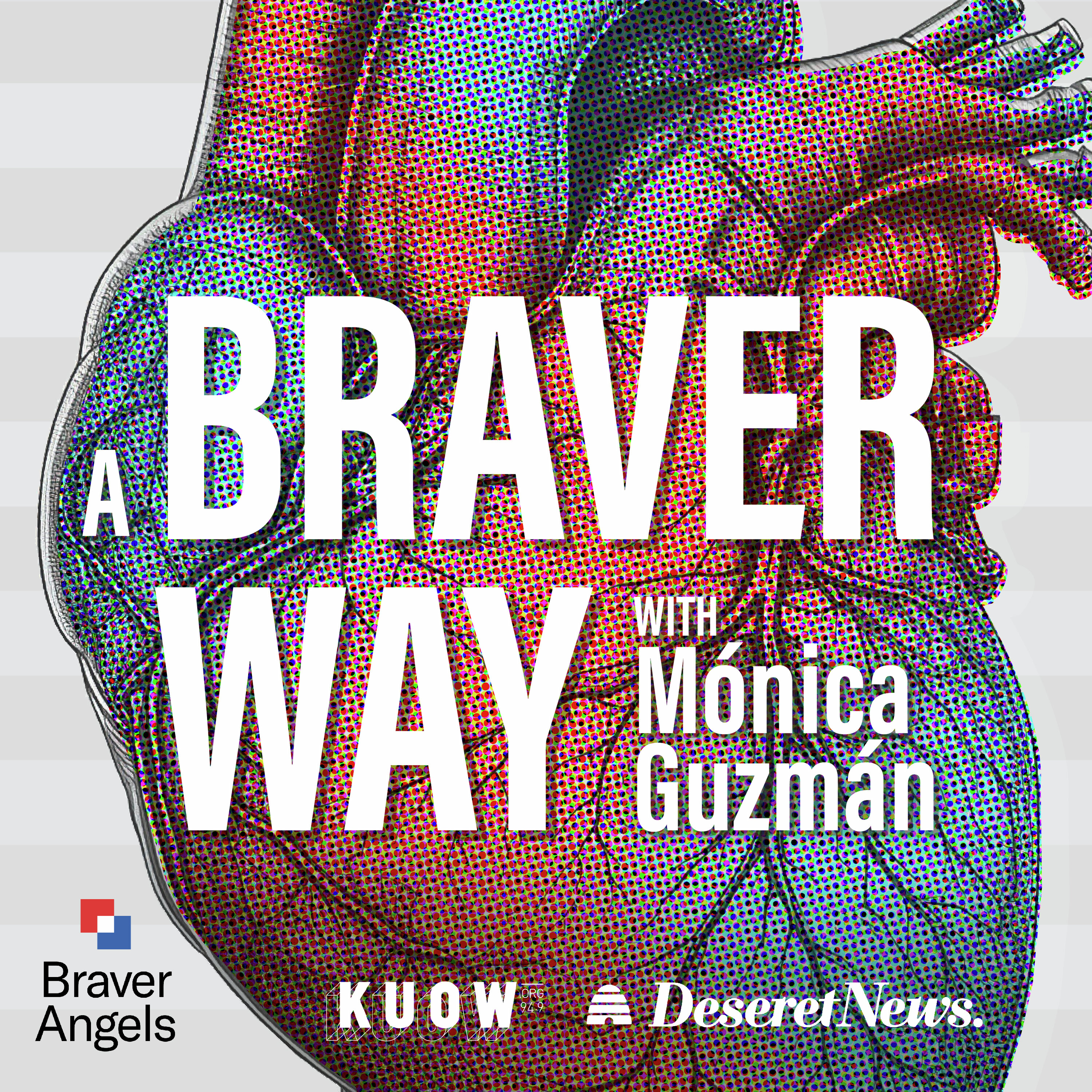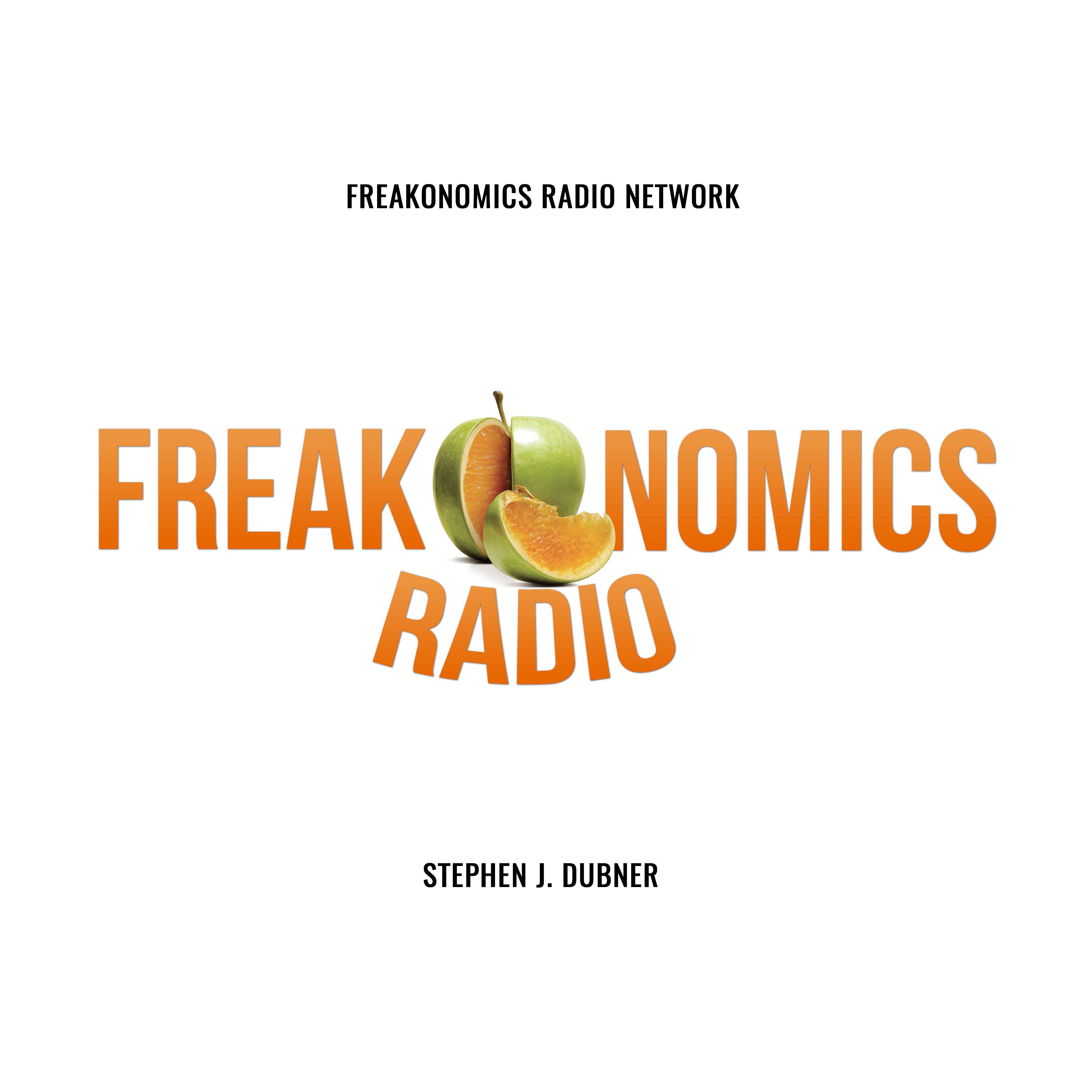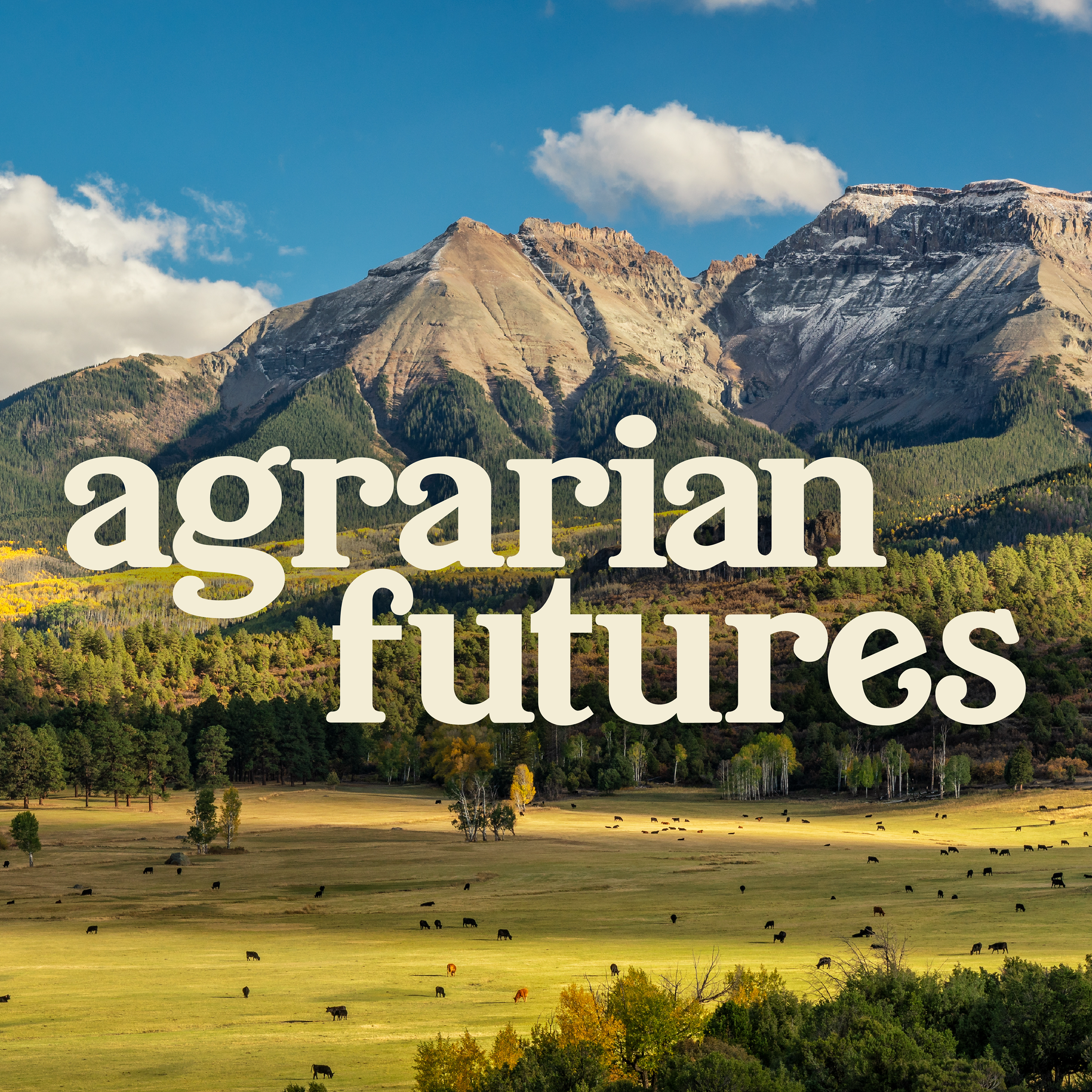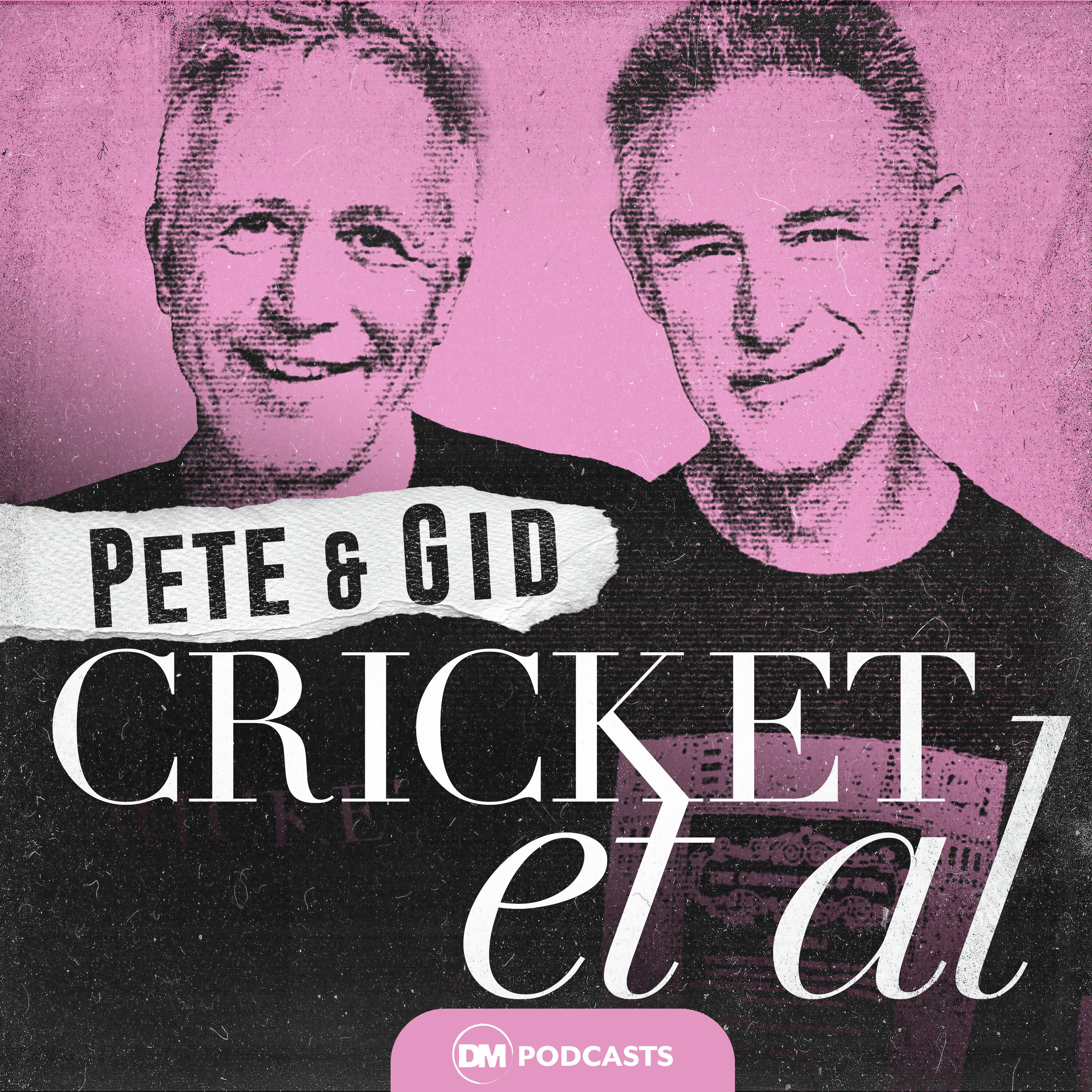
The RegenNarration Podcast
The RegenNarration podcast features the stories of a generation that is changing the story, enabling the regeneration of life on this planet. It’s ad-free, freely available and entirely listener-supported. You'll hear from high profile and grass-roots leaders from around Australia and the world, on how they're changing the stories we live by, and the systems we create in their mold. Along with often very personal tales of how they themselves are changing, in the places they call home. With award-winning host, Anthony James.
The RegenNarration Podcast
Beyond Killers of the Flower Moon: Nicol Ragland introduces a special series with the Osage Nation
Welcome to the launch of a very special series from a very special visit to the Osage Nation. Some of you might recognise the Osage Nation from the recent Martin Scorsese film, Killers of the Flower Moon (have a look at this awesome live performance at the Oscars). Or from the book that was based on, by David Grann. Or indeed, from the podcast series, In Trust. They’ve all done a heck of a job bringing to new light and new generations what was done to the Osage back in 1920s Oklahoma. In this series, we follow the story of the Osage in the 2020s – mapping a masterful resurgence of land reclamation, food sovereignty, the return of language, and so much more.
Our privilege was to share time with Chief Standing Bear, and later the Nation’s Secretary of Natural Resources, Dr Jann Hayman. The stories and work of both are captivating, moving and often astounding.
To set the scene for us first is the person who introduced us, friend and filmmaker Nicol Ragland. You might remember Nicol as director of the very first Farmers Footprint film, among many others. Or episode 80 on this podcast. Well, four years since that podcast, after we moved on from last week’s incredible story in Texas, we met Nicol for the first time in person at her home in Oklahoma City. And after we’d visited the Osage together, we headed out to Nicol’s farm. That’s its own story. For this episode though, I asked if she’d share some of the story of her unlikely return to her roots in Oklahoma, and how only then did she start to learn of its deeper stories.
Recorded 8 April 2025.
Title slide: Nicol at her farm (pic: Anthony James).
For more behind the scenes, become a supporting listener below.
Music:
Beginning & ending music by Jeremiah Johnson.
Stones & Bones, by Owls of the Swamp.
The RegenNarration playlist, music chosen by guests.
The RegenNarration podcast is independent, ad-free and freely available, thanks to the generous support of listeners like you. We'd love you to join us.
Become a paid subscriber to connect with your host, other listeners and exclusive benefits, on Patreon or the new Substack.
Or donate directly via the website (avoiding fees) or PayPal.
While you can also visit The RegenNarration shop. Come to an event. And please do share, rate and review the podcast.
Thanks for your support!
G'day Anthony James here for The RegenNarration, your listener-supported podcast exploring how people are regenerating the systems and stories we live by. Today we launch a very special series from a very special visit to the Osage Nation. Some of you might recognize the Osage Nation from the recent Martin Scorsese film Killers of the Flower Moon, or from the book that was based on by David Grann, or indeed from the podcast series In Trust. They've all done a heck of a job, bringing to new light and new generations what was done to the Osage back in 1920s Oklahoma.
AJ:In this series, we follow the story of the Osage in the 2020s, mapping a masterful resurgence in many ways of land reclamation, food sovereignty, the return of language and so much more. Our privilege was to share time with Chief Standing Bear and later the Nation's Secretary of Natural Resources, Dr Jann Hayman. The stories and work of both are captivating, moving and often astounding. To set the scene for us today is the person who introduced us, friend and filmmaker, Nicol Ragland. You might remember Nicol as director of the very first Farmer's Footprint film, among many others or episode 80 on this podcast.
AJ:Well, four years since that podcast, after we moved on from last week's incredible story in Texas, we met Nicol for the first time in person at her home in Oklahoma City, and after we'd visited the Osage together, we headed out to Nicol's farm. That's its own story. For this episode, though, I asked if she'd share some of the story of her unlikely return to her roots in Oklahoma, and how only then did she start to learn of its deeper stories. Hey, Nicol, here we are at the farm, where we spoke four years ago, and you were inside over there. Amazing to be with you. Thanks for bringing me here.
Nicol:It's magic that you're here.
AJ:It gives us a chance to talk about who we met the other day, the conversation that I had with Chief Standing Bear, who you were able to introduce me to. How did your connection with him come about?
Nicol:It came about by virtue of coming back home to Oklahoma maybe coming up on eight years now and by virtue of directing the film Farmer's Footprint. I came back to Oklahoma. It's a long roundabout story, but I think I circled Oklahoma like a buzzard for a while, wondering if, when I could land here and reenter my home state, I left here really young, when I was 16 and lived in Colorado and Los Angeles and different parts of the world and learning so much around the importance of regeneration and regenerative agriculture and soil health and realizing that soil health and our relationship to land is essentially 99 of our 100 problems solved right. And so I just started making contacts with folks across the state soil health experts and NGOs and state agencies and you know there's a handful of folks here. It's a small state, there's more land than people here and just you know, making the connectivity and realizing they needed more storytellers and I needed them, their expertise, and and then, long story short, really started creating more, for the Oklahoma Association of Conservation Districts became their creative director. They represent, I believe, five different tribal conservation districts across the state and um, one of which is the Osage nation, and so um part of what I was instigating more within the nonprofit was how do we reach more people, how do we reach more consumers? Not just singing to the choir, but how do we create more connectivity and bridge building between producers and consumers connectivity and bridge building between producers and consumers.
Nicol:And so we did a screening actually of to which we belong, and had a couple of producers as well as chief standing bear and I had I think I'd reached out. I was trying to remember the exact time that I met him directly, but I I'd known that they had received some COVID funding, of which instigated their massive greenhouse and their mercantile and their processing plant, which was a very big deal for a tribe to really start building more food sovereignty and self-sufficiency for their people. And they're a smaller, smaller tribe. So I was super excited about that and just reached out to Jan, who you talked to, who's director of natural resources, and said you, this is my work, can I come document what you're doing and learning a little bit more? And Chief Standing Bear was just readily available. He was just so wonderful and open-hearted and willing and oftentimes it can be difficult to reach chiefs of tribes, so it was really wonderful to make that connection because he's just kind and open-hearted and willing and very, very focused and caring about food sovereignty for their people.
AJ:Yeah, it sure was great to speak to them both and find all that welcoming as well. And before we met the other day and went out to meet them, you had talked to me about some of the context and then shared a podcast with me that shared some of the context too.
AJ:I'd love if you can walk us through that, set the conversation up that I ended up having out there, or the conversations by way of the context that they have confronted, I mean, from how they came to be here at all and a bit of the story of what oklahoma is, in that sense, such a unique part of the story through to what they is, in that sense such a unique part of the story through to what they confronted in the last century, that holds what they're doing now in such esteem.
Nicol:Well, I don't hold myself a Native American history buff and everyone should listen to In Trust by Bloomberg. It's probably hands down the best podcast that I've ever heard on the history of the Osage Nation, and so I don't want to lose track of the specifics of their history. But you know, in short and what many people witnessed in Killers of the Flower Moon, it's really amazing that that book you know became into a giant Scorsese film and people across the country learned about the history of the Osage Nation Across the world.
Nicol:Across the world thanks to Martin Scorsese. Absolutely so, again, the power of storytelling. A small tribe, you know, and ended up at a table at the Oscars, including Chief Standing Bear, which was incredible.
AJ:With an extraordinary performance you told me, about which I've since looked up and seen.
Nicol:Wow.
AJ:Yeah, I'll link to all that here.
Nicol:Yeah, but you know, in short, in the 20s the Osage were one of the wealthiest peoples, certainly in the country, if not across the planet, and predominantly because of oil. So we all know the typical story in the states of the extraction and raping and pillaging and taking of land and marrying into families in order to obtain said land and oil reserves, and just brutal, incredibly violent, horrible history.
AJ:Marrying to then kill to get the rights. Yeah, I mean extremely violent, as depicted in the film.
Nicol:Yeah, I mean extraordinary creative cruelty, the kind that you listen to and you can't believe that we're capable of doing. So, yeah, I mean, they're still here, which is incredible, and making their way and again a smaller tribe and doing the best they can. And it's incredible that there is light on their history now and and as far as I know, can actually still be happening of the wanting to take oil in that particular area and wanting to take up land and head rights that has essentially still robbed them of land that they deserve. So, yeah, it's an incredible honor just to know them and to sometimes work tangentially to them and with them and for them. It's a gift to come home to Oklahoma and learn so much of this Native history that I didn't learn growing up.
Nicol:I had to get well into my 40s to learn the details of all of this and then to have it circle back into the space of soil, health and life and regeneration, where we all know this has become a catch word and very oversaturated and capitalized on, and we've talked a little bit about this. It's almost difficult to use the word regeneration when essentially, this is what indigenous peoples have been doing since the beginning of time, and so, um, to have that circle into my own home state and to relearn the history that is all of our history. It's, you know, specifically the osage history. It is theirs but it's ours. It's our biological obligation and me as an Okie to learn that and to listen, to constantly listen and to be you know, in my particular case, a storyteller and to try and you know, use my tools to enhance their story and to possibly build on what they're already creating in the world of food sovereignty.
AJ:Yeah, it is really striking to hear you talk about that what you never knew as well and what's come to you as you've come back to a place you never thought you'd come back to. It's all very interesting. And then the broader backstory to Oklahoma that I scarcely knew about as well, where there are 39 tribes here and we had this expressed in the First Americans Museum, another story of extraordinary well generation. Only three or four years old, an amazing place, and it was the Choctaw woman who showed us around said that 39 tribal nations with all the languages that run with that makes it a more diverse landscape area than Europe today, for example. Things like that that just give perspective. But of course it wasn't chosen. So for those who don't know, oklahoma only came to be as a state 120 years ago. What was it before that and what was the story behind that?
Nicol:I mean, we all know well, not all, but the Oklahoma land run right was the taking of land here. Yeah, there's more tribes in this state than any other state across the country, you know, and still surviving here.
AJ:And that was the Trail of Tears, which I knew the phrase of, but I didn't know exactly what it meant.
Nicol:Yeah well, it's movement into this particular area in order to survive. So there's survival history, forced marches of tribal nations from everywhere.
AJ:So there came to be that concentration here. I believe not all made it that there were to be more, but they didn't survive or they were forced out again with treaty breaks and so forth. There are 39 left and to think that they're managing things in this extraordinary way, like the Osage and the Choctaw and Cherokee that we met as part of that museum amazing.
Nicol:Yeah, and seed savers too. I mean, there's tiny tribes like the Pawnee I've connected with the Pawnee before and still protecting their mother corn. Actually, terry McCosker, our mutual friend, and his wife came out to visit and I took them to the Pawnees and I mean tiny, tiny place and they had actually their mother corn that was protected in a room that we weren't allowed to go into, in a room that we weren't allowed to go into. It's a really, really ancient tradition and protection of corn that, as we all are well aware, is just gold at this point that many people are trying to buy in order to, you know, heal diabetes, some sort of, you know, crazy idea like that. But, yeah, many holding really ancient, ancient, precious traditions that could easily have died off, that are that they're still protecting and seed, as we know, is just. I mean, we couldn't be, we should be significantly more protective of seed, native seed, yeah, and they're doing it, and so, again, we have so much to be learning from them yeah, and be grateful for Nicole.
AJ:Thanks for sharing the stories with us still in everything you're doing, and thanks for sharing this context with us for the conversations we're about to hear with Chief and Jan.
Nicol:Yeah, of course. Thanks for being here. It's magic from the other side of the world and the whole family Grateful, very grateful.
AJ:That was Nicol Ragland. Next up, Nicol introduces us to Chief Standing Bear. Thanks very much to the generous listeners making all this possible. You too can join them in helping to keep the show going by heading to the website or the show notes and following the prompts. Thank you he music you're hearing is by Jeremiah Johnson. My name's Anthony James. Thanks for listening.



















